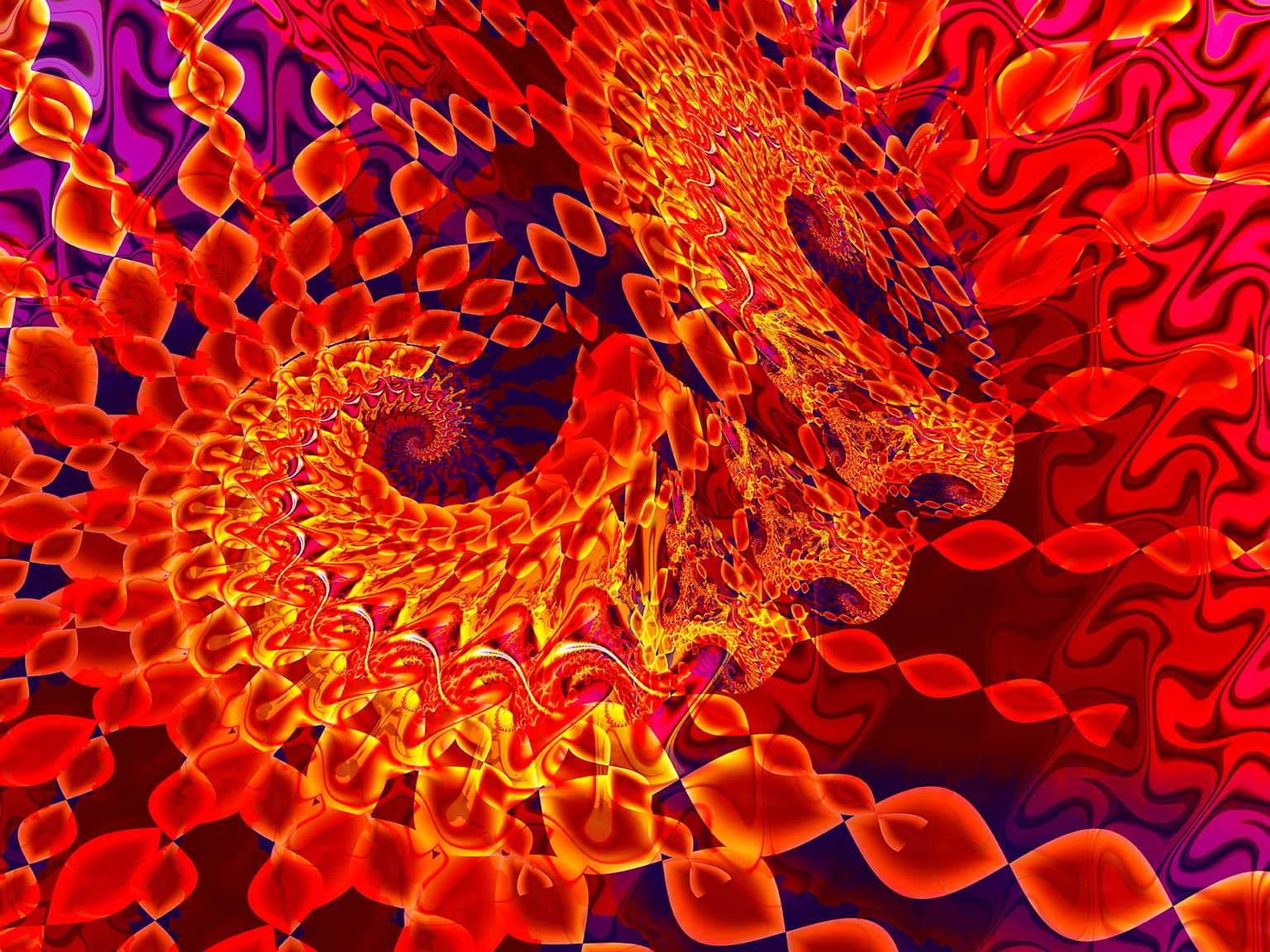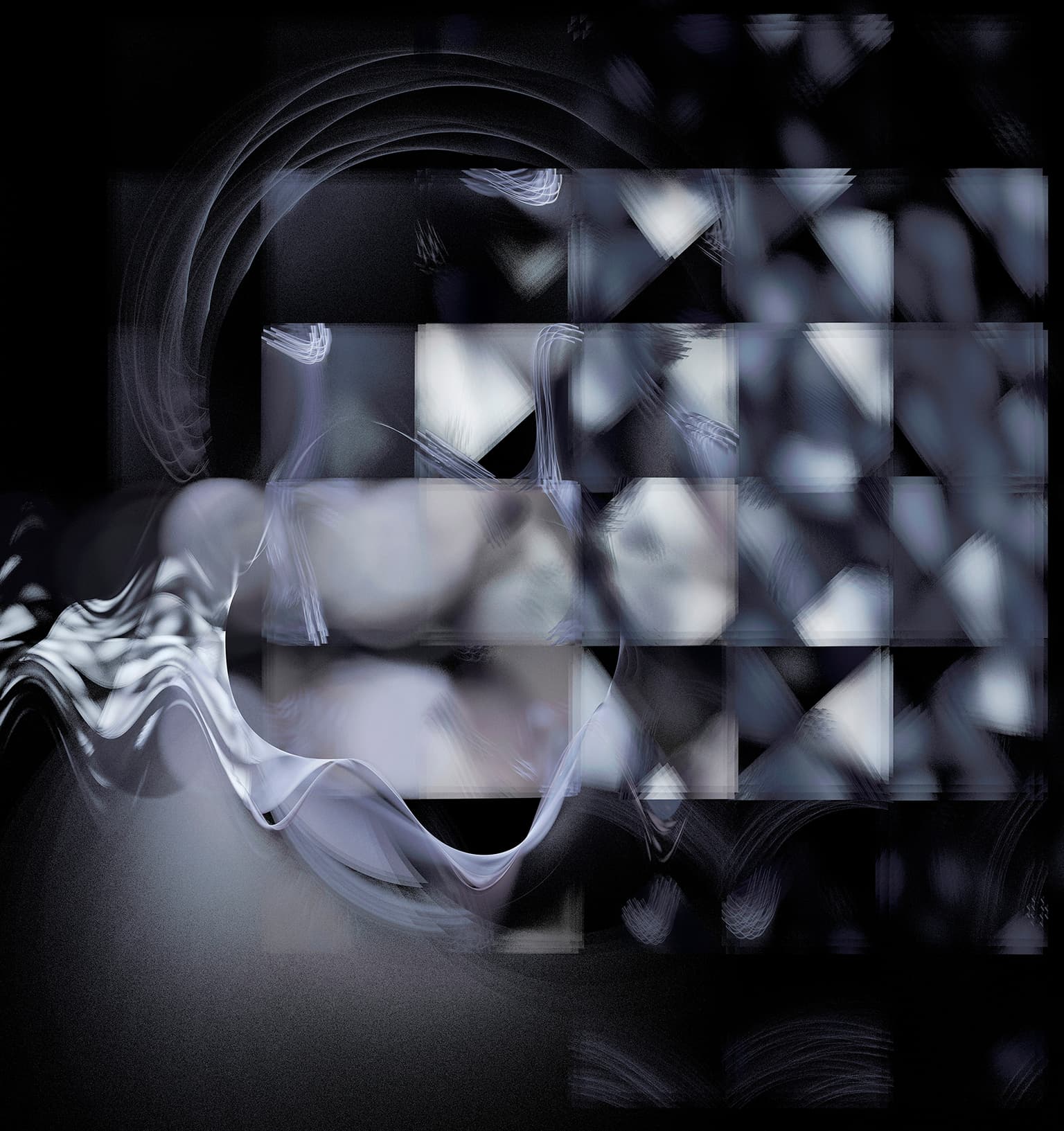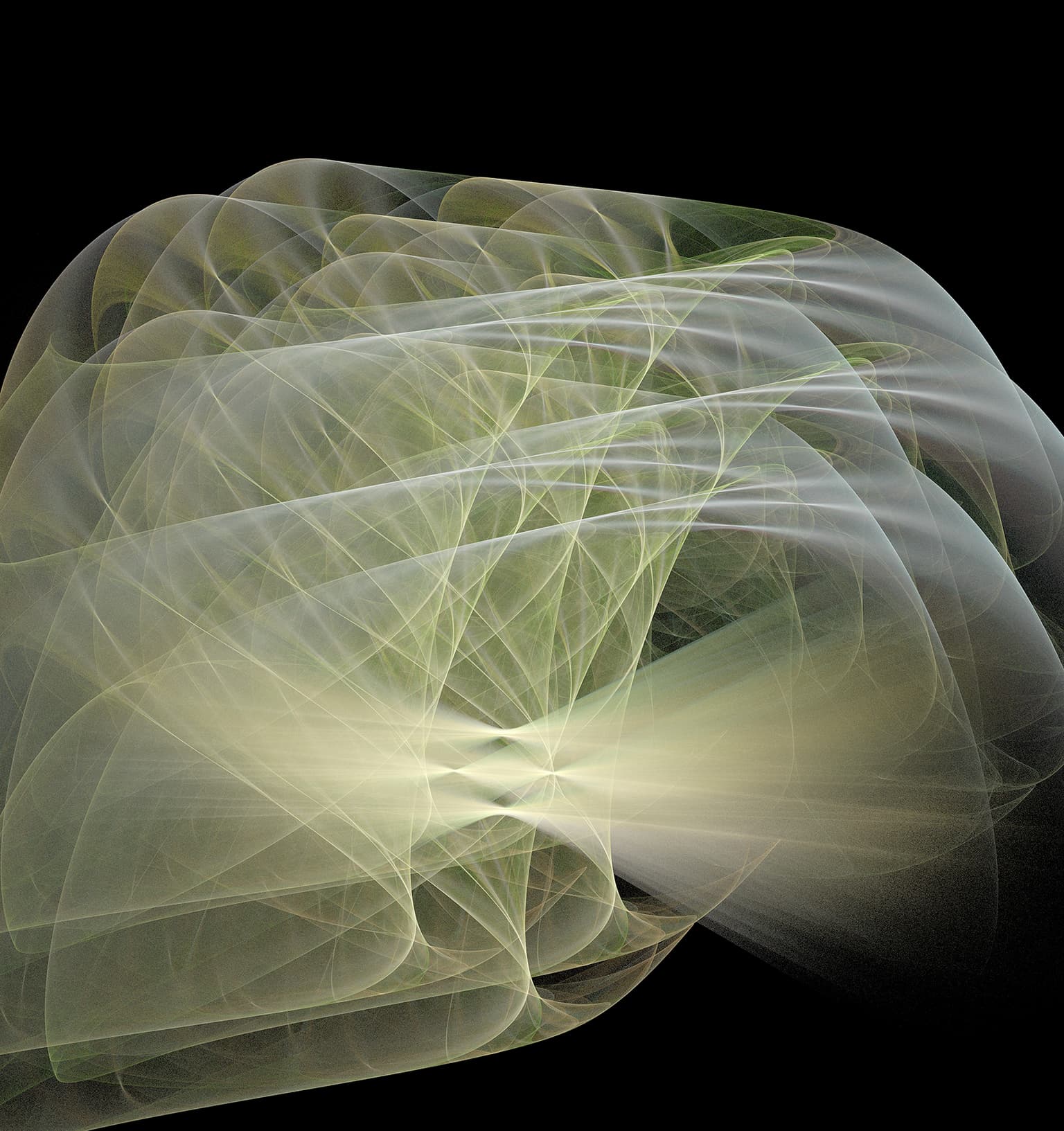2015 Joint Mathematics Meetings
Julia Dawn Gray
Artists
Julia Dawn Gray
Artist
Teme Valley in England
Statement
My aim is to create a mood, a feeling, a response in my viewer to lead them into different worlds & galaxies ~ transported on fine lines & shades & colour ~ to tell a story, weave a myth, to right a wrong, to explain a situation ~ all using mathematical algorithms & formulas & a variety of software ~ which, with the help of my SuperComputer ~ Lossus, become works of art. So, basically, I am a story teller in pictures ~ a dream weaver.
Artworks

Igneous ~ Dragon Dance
18 inches x 24 inches
Original Print
2014
The whirling of flames hits the breath of the air & suddenly sparks were flying everywhere.
I love watching the pictures in flames in the fire & along with a passion for dragons I made my decision to create an image of a flickering dance with tongues of flame.
My journey began with a Julia set version of an IFS fractal, using a distance metric as a proxy for probability ~ as I was trying to mathematically map breath. Then to create the tongues of the flame added square root & cube root into the equation.
Choosing colour routines & palettes in hot & fiery shades to give the feel of a dragon's fiery breath.
What makes this artwork unique is that it is a combination of mathematics & my human mind both infinite in their own ways.

Dappled Light of Day
22 inches x 20 inches
Original Print
2014
With the gentle splash of spray on gray tiles. Streaked silver in waters so deep that fish make lazy circles in deep blue. The dappled shadows dance over the eerily quiet scene as the naiads rise from their watery halls.
Dappling of light has fascinated me since I was a baby lying in my pram ~ add water & it becomes something quite magical.
For this design I used a Julia 3D set & mathematically both opus vermiculatum techniques ~ tiny tesserae, 4mm square, as in Greco-Roman mosaics in the foreground in an undulating worm-like fashion & opus tessellatum ~ larger in size making up the far wall where the light source is dappled by using the restricted colour palette of a distinct native Italian style giving the illusionism of painting.
.

Spinning the Silk
22 inches x 20 inches
Original Print
2014
In Japan, I learned how to take the suga strands from the silk moth's cocoons & combine them into a fine thread. This image shows the many strands it takes to untwine & then recombine to make a thread which is strong & which catches the light on every turn in every stitch.
Just like a spirograph uses hypotrochoids & epitrochoids to produce a mathematical roulette of curves. The lines in this design rely on multiple iterations in which a succession of approximations, each building on the one preceding, is used to achieve a desired degree of accuracy & to give depth, along with a lightly shaded colour palette of green, pink & cream.
Add a light source at 45 degrees & the lines resemble a silken weave which is then layered.